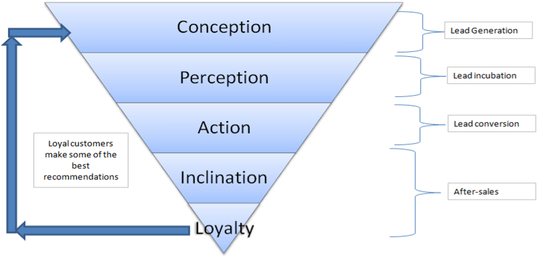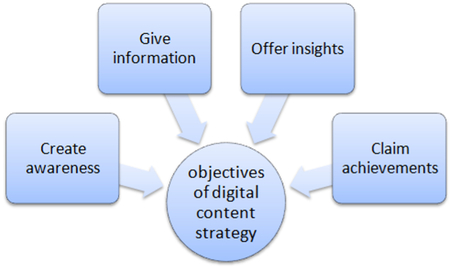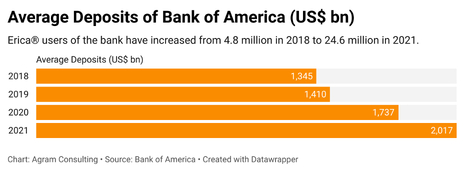POV

June 20, 2022
How Can Marketers Optimize Their Digital Content Strategy to Engage and Win Over Customers in an Omnichannel Environment?
With millions of new users dipping their toes into the digital world every year, it has become highly crucial for organizations to integrate communications across channels for a better customer experience.
While we can still categorize revenues as off-line and online based on the point of sale, it's nearly impossible to map the customers' buying journeys as off-line or online—hybrid is a new normal. For example, according to an IBM report, 27% of consumers prefer phygital as their primary buying method today, whereas 36% of the gen-Z population follows the phygital route. These findings are based on a survey of 19,100 respondents from 28 countries.
According to Dentsu estimates, global digital ad spends at US$408 billion in 2022 are likely to be 154% of 2019 digital ad spends—the market has leapfrogged by 5 years at least in the last two years. Total spends on display and paid search are expected to account for 56% and 38% of this year's total digital spending.
So the world will create a lot of digital content in the future. But the moot question is how to use it intelligently to win over customers and drive revenue.
To my mind, the percentage of consumers taking the phygital route will increase every year, and thus, marketers must have a well-documented digital strategy. And not so surprisingly, brands such as Mercedes Benz are planning to allocate as much as 90% of their ad spend budgets to digital in young and emerging markets like India within the next couple of years.
The contribution of online sales to your overall revenue might be minimal—say only 5%—but that shouldn't discourage you from spending money on paid searches. In fact, Google's study of retailers in the European markets reveals that, on an average, 14% spends on paid searches accounts for 24% of their media-driven revenue.
So how can your digital content win the hearts of your prospective and existing customers?
Let's revisit the conventional marketing funnel, the starting point for content creators.

Who are we talking to—don't you hear this question from content creators? Unfortunately, the genuine answer for most business leaders today is an unpredictable consumer who will not progress through the conventional funnel linearly.
Until now, marketers used SEOs, e-Books, white papers, viral marketing, and PR campaigns, amongst others, to persuade a potential buyer in the conception (or awareness) phase. And besides making appeals for repeated purchases, there was hardly any content strategy for loyal customers until recently.
A few geeks have already declared the conventional funnel obsolete. I think it's still relevant, but the game rules have changed considerably, thanks to phygital buying preferences and a substantial rise in purpose-driven customers.
Therefore, instead of following the funnel approach, a digital content strategy of any organization should be based on customers' emotional journey, brand promise, and its actual performance.
And your digital content strategy shouldn't undermine the role of customization and localization.
According to an HBR article on “Speak to Global Customers in their own language”, there is an undeniably strong link between in-language content and a consumer’s likelihood of making a purchase. The article also references a survey of web consumers in 8 countries that found:
- 1% of consumers spend most or all their time on websites in their own language.
- 4% of consumers said they are more likely to buy a product with information in their own language.
- 2% of consumers said that ability to obtain information in their own language is more important than price.
So, it's imperative to look beyond the universal language. The hyperlocal template is the way to go. Keywords, content, landing pages, and customer support all can be in regional languages. Don't just speak a language your customers understand. Speak the language they love.
Upcoming channels such as in-gaming and metaverse are creating a lot of noise. While you should keep an eye on their progress, they have a long way to go before entering the democratization phase. Until then, you might want to focus primarily on paid searches, social media, and video streaming to optimize your digital content. While you do that, you should be mindful of sea-level changes such as Cookiepocalypse.
But the basics of digital content remain the same.

All your communications channels should work like a well-oiled machine since consistency and quality of services across channels is important. For instance, if an organization claims that its app experience is best-in-class, it can't have a poor rating and too many negative user reviews.
On the flip side, no matter how efficient organizations are, their customers can often flock to social media seeking remedies for their grievances. Under such circumstances, organizations must use social media platforms to resolve customer queries instead of quietly taking these conversations off-line unless they involve privacy risks to their customers. But, again, this can add to the brand's credibility—key to making any digital content strategy effective.
If your product can't deliver what it promises, spending big money on content marketing will be counterproductive. You can't really flog a dead horse.
Moreover, customer loyalty programs and customer referral programs have become some of the most significant talking points even for a customer who's still in the research phase and yet to form any perception of your brand.
And it need not be even about products and brands always. Your entire digital content strategy can revolve around experience.
For instance, Bank of America—one of the largest banks in the US by assets —talks extensively about the convenience it offers to its customers.
Erica, Bank of America's NLP-AI-based virtual financial assistant, resolves customer queries in real-time. Moreover, Erica-driven assisted platform helps Bank of America's teams bring down their client-response time by one-third and saves 40,000 work hours each year.

Similarly, BofA's CashPro App allows its customers to do transactions in under a minute. In addition, the bank recently launched an AI-ML-based CashPro Forecasting tool that aims to automate companies' cash forecasting functions. BofA follows a carefully crafted digital content strategy that comprises creative, written, and visual content. The delivery of content, style, length, and duration depends on the distribution channel.
Any banker aiming to repeat the success story of BofA's digital content strategy in other regions may consider making all communications hyperlocal and hyperpersonal. For instance, in a diverse country like India, content created for rural markets in regional languages could be different from urban markets without any change in the key focus area—convenience.
As you would appreciate, the conventional business of banking, i.e., lending and borrowing, has somewhat become commoditized. The only differentiating factors could be the ability of banks to attract deposits and maintain asset quality. Therefore, large banks attract retail accounts by offering them a peaceful, secure, and enjoyable online experience. What holds true for a bank should hold for any other company selling commoditized B2C products.
In brief, customers can start their buying journey on an app, do their research on the internet, and buy a product in a physical store near them or vice-a-versa. An effective content strategy would facilitate this journey.
And you never know, someday banks may sanction loans to their customers for buying properties in the virtual world. And maybe, many of us may offer real assets such as gold and real estate as collateral. So the digital content strategy should be flexible enough to accommodate such changes in the future.
Remember as Charles Darwin said, “It’s not the strongest of the species that survives, nor the most intelligent. It is the one that is the most adaptable to change.” And that holds true for all us marketers too!
Balaji Vaydanathan
Director and Head of Marketing (CEEMEA)

Balaji Vaidyanathan is an accomplished global marketing leader with 20 years of insightful experience in brand, advertising, digital, content, and mainline. In his current role since February 2019, he is responsible for building the marketing value proposition, brand digital presence, and strategic footprint across CEEMEA. He also drives marketing efforts for a global strategic project to launch the first-ever fintech wealth management platform in Germany as part of a broader European market penetration strategy.
Please login to join the discussion
Comments
No comments yet.
Premium Membership
If you are a registered CMO Council member, upgrade to a Premium Membership. Not only will you gain access to this report, you will also gain access to over 300 full data reports and studies. Premium membership delivers access to all reports, the CMO Council Insight Center and the private mentorship community, CMO+.
Library Subscription
If membership is not the right fit, a library subscription provides access to the reports and content you value. As a subscriber, you will gain unlimited access to all CMO Council content, including over 300 reports, executive summaries and white papers as well as unlimited access to thousands of data points and articles in the curated Insight Center.
